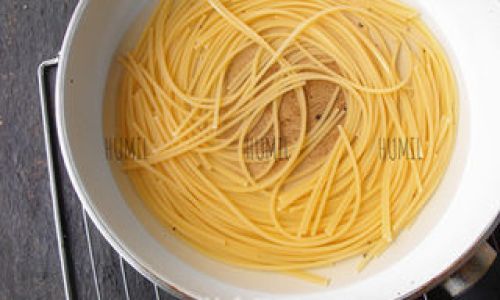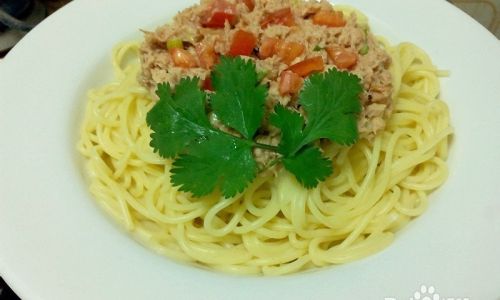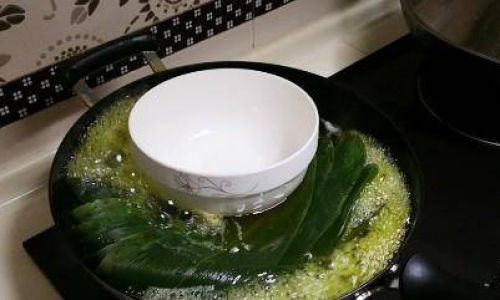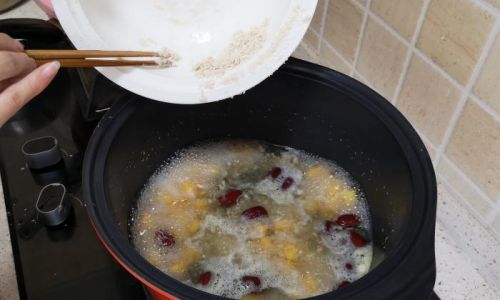Table of content
- Ingredients:
- Equipment:
- Step 1: Prepare Your Workspace
- Step 2: Measure and Combine Ingredients
- Step 3: Mix and Form Dough
- Step 4: Rest the Dough
- Step 5: Roll Out the Dough
- Step 6: Cut the Pasta
- Step 7: Hang or Lay Out to Dry (Optional)
- Step 8: Boil the Pasta
- Step 9: Reserve Pasta Water (Optional but Recommended)
- Step 10: Drain and Sauce the Pasta
- Step 11: Serve and Enjoy
Making authentic Italian pasta from scratch is a rewarding culinary endeavor that brings a sense of accomplishment and delight to any food enthusiast. It’s not just about following a recipe; it’s about understanding the art and science behind each step, ensuring that the final dish captures the essence of Italy’s rich culinary heritage. From selecting the right ingredients to mastering the rolling and cutting techniques, this guide will take you through a detailed, step-by-step process to create perfect homemade Italian pasta.
Ingredients:
Before diving into the steps, let’s gather the essential ingredients:
- Semolina Flour: Known for its high gluten content, which gives pasta its elasticity and chewiness.
- All-Purpose Flour: Adds a touch of tenderness to the pasta.
- Fine Sea Salt: Enhances flavor and helps with dough elasticity.
- Eggs (optional, for egg pasta): Provides richness and a golden hue. For a vegan version, you can omit eggs and use water or a plant-based milk alternative.
- Olive Oil (optional): Adds moisture and a subtle flavor.
- Water: To knead the dough to the perfect consistency.
Equipment:
- Large Mixing Bowl
- Wooden Spoon or Dough Hook
- Pasta Machine (optional but recommended for even rolling)
- Rolling Pin (if not using a pasta machine)
- Sharp Knife or Pasta Cutter
- Clean Kitchen Towel or Cloth
- Large Pot for Boiling Water
- Colander or Strainer
- Tongs or Pasta Fork
Step-by-Step Guide to Making Italian Pasta
Step 1: Prepare Your Workspace
Begin by clearing a spacious area on your kitchen counter. Ensure it’s clean and free of clutter to give you ample room to knead and roll out the dough.

Step 2: Measure and Combine Ingredients
In a large mixing bowl, combine 2 cups of semolina flour, 1 cup of all-purpose flour, and a pinch of fine sea salt. If you’re making egg pasta, create a well in the center of the dry ingredients and add 4 large eggs. For a vegan version, mix 1 cup of warm water with a tablespoon of olive oil and a pinch of salt before adding it to the flour mixture.
Step 3: Mix and Form Dough
Using a wooden spoon or dough hook, gradually incorporate the wet ingredients into the dry, mixing until a shaggy dough forms. If the dough seems too dry, add a little more water (a teaspoon at a time). If it’s too sticky, sprinkle with a bit more flour.
Transfer the dough onto a lightly floured surface and knead for about 10 minutes. The dough should become smooth, elastic, and slightly firm. If it feels too tough or dry, add a tiny bit of water. If it’s too sticky, incorporate more flour.
Step 4: Rest the Dough
Wrap the dough in a clean kitchen towel or plastic wrap and let it rest for at least 30 minutes. This resting period allows the gluten to relax, making the dough easier to roll out without tearing.
Step 5: Roll Out the Dough
Divide the rested dough into smaller, manageable portions. If using a pasta machine, set it to its widest setting and feed a piece of dough through. Gradually adjust the settings to thinner settings, passing the dough through each one until you reach your desired thickness. Aim for a setting that yields pasta that is about 1/8 inch thick.
If rolling by hand, use a rolling pin to flatten the dough into a thin sheet. It may take some practice to achieve uniformity, but patience and gentle, even pressure will get you there.
Step 6: Cut the Pasta
Once the dough is rolled out, you can cut it into your preferred shape. For classic spaghetti or fettuccine, use a sharp knife to cut the dough into long, thin strips. For other shapes like ravioli or pappardelle, you might need a pasta cutter or a pizza wheel.
For homemade pasta like lasagna, you can leave the dough in large sheets. Remember, the thicker the pasta, the longer it will take to cook.
Step 7: Hang or Lay Out to Dry (Optional)
If you have time, let the cut pasta hang over clean kitchen towels or lay flat on a lightly floured surface to dry slightly. This step is optional but can help the pasta hold its shape better during cooking. Air-dried pasta will also have a slightly firmer texture when cooked.

Avoid letting the pasta dry completely, as it will become too brittle to cook properly. Aim for a slight tackiness to the touch.
Step 8: Boil the Pasta
Fill a large pot with water, add a generous amount of salt (about a tablespoon per 4-6 quarts of water), and bring it to a rolling boil. Use a large pot to ensure there’s enough space for the pasta to cook without overcrowding.
Add the pasta and cook until al dente, which means firm to the bite but cooked through. This usually takes 2-4 minutes for fresh pasta, depending on thickness. Test a piece by tasting it; it should be cooked but still have a bit of resistance.
Step 9: Reserve Pasta Water (Optional but Recommended)
Before draining the pasta, ladle out a cup of the pasta cooking water. This starchy water can be used to finish sauces, helping them to coat the pasta evenly and add a silky texture.
Step 10: Drain and Sauce the Pasta
Once the pasta is cooked to your liking, use tongs or a pasta fork to transfer it to a colander and drain well. Immediately add the pasta to your prepared sauce, tossing gently to combine. If the sauce seems too thick, add a little reserved pasta water to achieve the desired consistency.
Step 11: Serve and Enjoy
Serve your homemade pasta hot, garnished with freshly grated Parmesan cheese, a drizzle of olive oil, and a sprinkle of fresh herbs like basil or parsley. Enjoy the satisfaction of knowing you’ve crafted a delicious, authentic Italian dish from scratch.
Tips for Perfect Pasta:
- Quality Ingredients: Always use high-quality flour and fresh eggs for the best flavor and texture.
- Patience and Practice: Making pasta takes practice. Don’t be discouraged if your first attempts aren’t perfect.
- Don’t Overwork the Dough: Over-kneading can make the pasta tough. Stop kneading once the dough is smooth and elastic.
- Use a Pasta Machine if Possible: It makes the rolling and cutting process much easier and ensures consistent thickness.
- Season the Water Generously: Salted boiling water enhances the pasta’s flavor as it cooks.
In conclusion, making homemade Italian pasta is a delightful and rewarding experience. By following these steps and tips, you’ll be able to create delicious, authentic pasta dishes that rival those found in the best Italian restaurants. Buon appetito!





0 comments